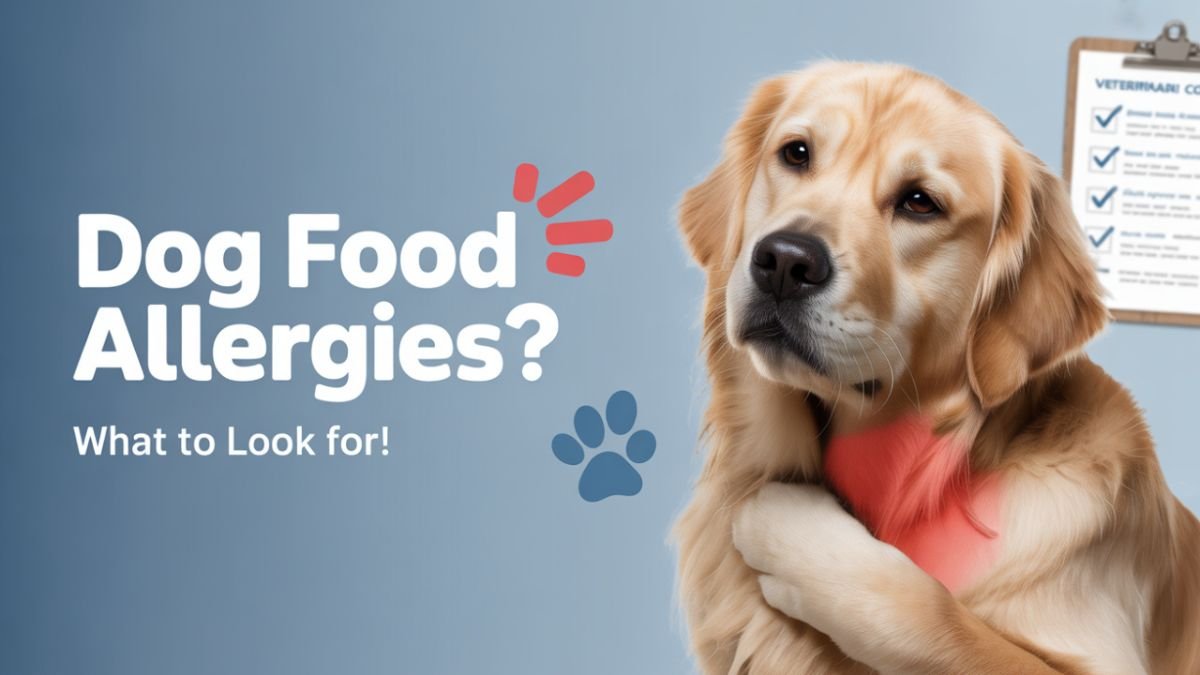Here is the fully humanized long article- english article on Food Allergies in Dogs compiled and explained from the above references. It describes the symptoms, causes, diagnosis, and treatments for food allergies in dogs in very simple and concise language.
Food Allergy in Dogs: Everything about Causes, Symptoms, and Treatment
When we talk about the health of our precious dog, the diet plays a very important role. Did you know that some dogs have allergies to some food items? Food allergy causes a lot of discomfort for dogs. Today, we are going to discuss this topic in detail-we are talking about food allergy in dogs, symptoms of food allergy in dogs, causes, and the correct way to go about solving this type of allergy.
What is meant by food allergy?
Food allergies occur when the immune system of a dog reacts to a specific constituent in food as if it were harmful. It’s a slow process because your furry pet may have been eating a food for a while and then develops an allergy to it. These proteins include egg, chicken, beef, dairy, wheat, soy, and other grains in many cases.
Common symptoms of food allergies in dogs
Thus, generally, symptoms of food allergy will not vary distinctly from symptoms found commonly used for the skin or digestive human. Some of these tend to have a little scratching to licking and so much more. Let us see what these symptoms are.
- Itching and redness: It gets itchy and starts licking or scratching itself constantly. This happens mostly on the face, around ears, paws, and tail.
- Recurrent ear infections: Allergies can cause ear irritation and infections, which may also keep coming again and again.
- Loss of hair or thinning of hair: Itching leads to broken hair or more loss.
- Vomiting or diarrhea: These also may be indicated by the symptoms of allergies; for example, stomach pain with excessive vomiting or diarrhea occurs.
- Gas or bloating: That is when the dog may have excessive gas in the intestine or gets bloated.
- Lack of energy: Some dogs may just appear dull and inactive.
Sometimes itching in dogs can lead to skin infections, which also needs to be treated.
Difference between food allergy and food intolerance
Besides the food allergens involved, food intolerances and food allergies differ significantly in the pathological process. While a food allergy is characterized by an immune response by the body’s own immune system in case of a food allergen, food intolerance does not involve any reaction by the immune system in the organism. Like lactose intolerance in humans, the dog’s digestive system cannot digest certain substances properly.
Main causes of allergy
Food allergy can develop in dogs of any age and from any breed. Certain breeds, like the Lab, cocker spaniel, and West Highland white terrier, develop the allergy quicker than others. Most of the time, the proteins that the dog eats quite often induce food allergies; these include:
- Chicken
- Beef
- Dairy
- Eggs
- Wheat and corn
- Soy
Most symptoms associated with extreme allergies are triggered by any one of these ingredients in dogs.
Diagnostic tests and tests
Currently, there is no blood test that can be considered reliable for food allergies in dogs. The commonest procedure of diagnosing food allergy by veterinarians is a “food trial.” The dog then receives an appropriate feeding avoiding the allergenic food for a period of at least 8 to 12 weeks.
During food trials, the dog should not be given any other food, treats or scraps to get accurate results. They may also be accompanied by certain drugs that reduce allergy symptoms.
Food trials commonly consist of trying specific diets, such as:
- Hydrolysed protein diets: these contain proteins broken down into small enough fragments that the dog’s immune system cannot recognise them.
- Novel protein and carbohydrate sources: such as rabbit and potato, if the dog has never eaten them before.
- Skin support diets: these contain nutrients that calm the immune system.
Management and treatment
Food allergies cannot be entirely cured yet, but their conditions can be better controlled for the most part. The first treatment is to remove food from the diet of the dog that causes the allergy.
- Start an elimination diet as directed by your vet.
- Avoid the allergen food and follow the right diet.
- After a while, alternative food trials can help ascertain the correct foods that will be compatible for the dog.
- On rare occasions, it may be necessary to give antihistamines and steroids as part of your dog’s allergy treatment.
- Other additives, such as omega fatty acids, help keep the skin and coat of dogs healthy.
Food Caution
- The food must change gradually over a few days.
- Don’t give them sweets and treats, or new food without your veterinarian’s okay.
- Health checks are always necessary at regular intervals.
- Most immediate, visit to the doctor if dog starts to itch, vomit, or has diarrhea very often.
- Cleanliness and flea control should also be maintained, as flea allergy is one of the worst causes of all allergies.
Conclusion
Food allergy might be a state to a dog’s life but can be coped with well considering the appropriate awareness and control. Frequent scratching, blisters, recurrent ear infections, or pimples seen with the dog could indicate some allergies.Association of nausea problems suggests a food allergy. With the help of a veterinarian, find out which diet works best for your furry friend, and take all possible caution with the care of its health. It will keep him healthy, happy, and active throughout his life by maintaining the right and properly balanced diet indispensable to keeping allergies at bay.
